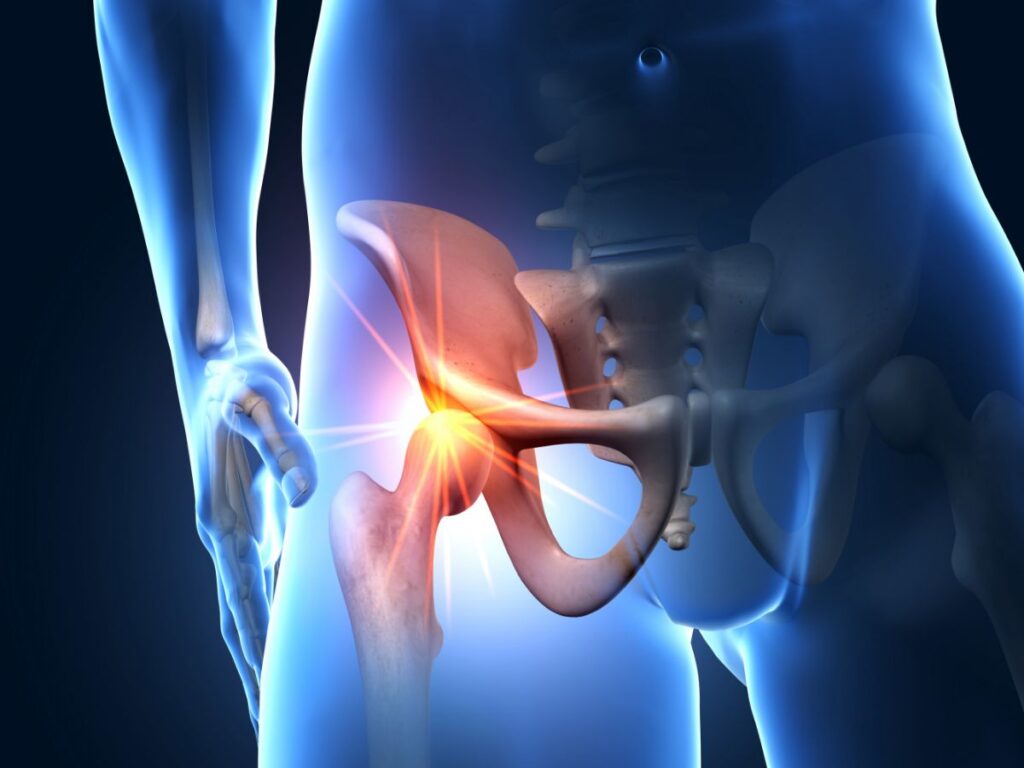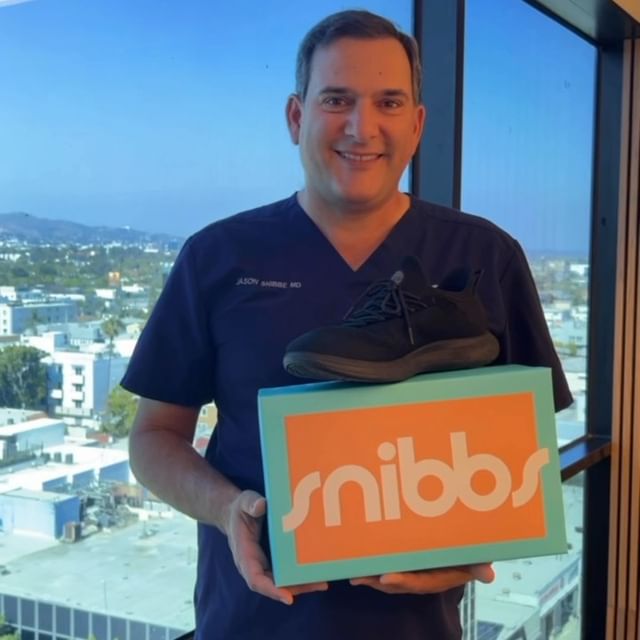Robotic Total Hip Replacement
in Los Angeles, CA
You use your hips repeatedly during almost all activities. Walking, turning, bending, and other everyday movements put wear and tear on the hip joints, causing degeneration.
Degeneration of the hip bones and cartilage causes pain and can significantly limit the
ability to perform normal daily tasks.
Two common causes of hip degeneration are rheumatoid and osteoarthritis, which break down bone and cartilage, often resulting in debilitating pain.

What Is Robotic Hip Replacement?
Total Hip Replacement (THR) is one of the most commonly performed surgeries among older individuals. It involves the removal of damaged cartilage and bone and then replacing the entire hip with an implant.
Robotic hip replacement is designed to improve precision and prevent human error. The process begins with a CT scan, which is used to create a 3D model of your individual anatomy. This model is uploaded to the Mako software and used to guide our surgeon as he strategically plans your surgical treatment.
Are You a Candidate for Robotic Hip Replacement?
Hip replacement is intended for individuals with severe joint disease
caused by avascular necrosis, femur neck fracture, rheumatoid and osteoarthritis, or functional hip deformity.
Hip replacement procedures are not usually appropriate for individuals with infections, prosthesis fixation failure, severe instability of the joint, compromised bone stock, skeletal immaturity, excessive body weight, and mental or neuromuscular disorders that may lead to instability of the prosthesis.
Smokers who are eligible for this procedure must quit before surgery.
Call (310) 860-3048 today and schedule a robotic hip replacement consultation at Snibbe Orthopedics in Los Angeles to learn more!
Benefits of Robotic Hip Replacement
Some of the advantages of robotic hip replacement include the following:
- Peace of Mind: The precision provided by robotic hip replacement reduces the risk of error and complications.
- Pain Relief: Robotic hip replacement alleviates the discomfort associated with inadequate joint cushioning and bone-on-bone pain.
- Increased Range of Motion: Most patients achieve the ability to move as they did before they started suffering from severe hip pain.
How Is Robotic Hip Replacement Performed?
Before Surgery
You may need to take the following steps before your surgery can be performed:
- Be cleared for surgery by your primary care physician
- Review medications with your doctor and stop taking any that may increase bleeding
- Have your oral health assessed (to rule out infection)
- Stop smoking
- Lose weight
- Complete laboratory tests and pre-operative forms
- Plan for post-surgery care
- Fast the night before and clean the surgical area with an antiseptic soap
Your Robotic Hip Replacement Surgery
Under general anesthesia, the surgeon prepares the hip socket and uses your unique surgical plan to guide the robotic arm while positioning the prosthetic hip.
During this procedure, the femoral head at the end of the thigh bone is replaced with a metal rod and ball, while a metal cup (acetabulum) is fitted onto the hip socket and lined with polyethylene plastic.
The Mako system helps keep the surgeon working only in the pre-defined area as determined by your specific needs and provides more accurate alignment and placement of your artificial hip replacement.
What to Expect During Recovery From Robotic Hip Replacement
Our team will monitor your condition closely and schedule follow-up visits to review your progress and review postoperative x-rays with you.
Some tips for a more positive recovery experience include:
- Prepare meals and pick up prescriptions before your surgery
- Prepare a comfortable place to rest with everything you need within arm’s length
- Arrange for help for the first two days at home
- Care for dressings and incisions properly
- Avoid strenuous activities
- Follow all your surgeon’s instructions
Following your surgery, our surgeon, physical therapists, and nurses will set individualized goals to get you moving again.
What Results Can I Expect After Robotic Hip Replacement?
After recovery, if you follow all instructions and do not experience any complications, you should regain the ability to move freely without pain.
The importance of following all instructions cannot be over-emphasized—it directly affects the success of your hip replacement surgery.
How Much Does Robotic Hip Replacement Cost?
The cost of Robotic Hip Replacement depends on the condition of your hips as well as surrounding tissues and structures.
To receive an accurate quote, schedule a consultation with Dr. Snibbe.
Our Respected Los Angeles Robotic Hip Replacement Specialist
You may have seen Dr. Snibbe on Good Morning America or CNN. Several celebrities and professional athletes have sought his help to alleviate pain and regain full range of motion.
Dr. Snibbe is highly skilled and experienced with robotic hip replacement and has the lowest complication rate in hip replacement surgery of any surgeon performing the procedure at Los Angeles’s Cedars-Sinai Medical Center.
Snibbe Orthopedics is now accepting new patients and welcomes individuals from Los Angeles, Hollywood, the San Fernando Valley, and across the country.

Please call (310) 860-3048 to reach our orthopedic medical practice if you have hip pain or reduced range of motion.






